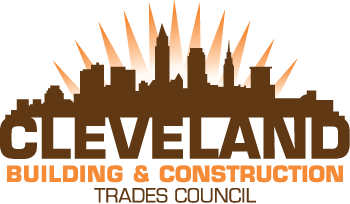Construction Leaders Promote PLA Use
Project Labor Agreements make good business sense.That was the message delivered by Dave Wondolowski, Executive Secretary of the Cleveland Building Trades, and Matthew A. Szollosi, Executive Director of ACT Ohio, to readers of The Plain Dealer, as both co-authored an article discussing the important benefits of PLAs for cleveland.com. The article was written as a response to an op-ed piece that ran in the Sun Newspapers written by Baylor Myers, Director of Americans for Prosperity, who called for passage of legislation banning PLAs in the public sector.As Wondolowski and Szollozi point out, the value of PLAs is found in the fact that “corporations, and their construction management teams, engineers, architects and capital improvement professionals understand that utilization of project labor agreements on certain complex construction projects ensures project delivery on time, on budget, and with the highest degree of workmanship.”PLAs are used by many private- and publicly-owned companies throughout the state of Ohio. The many businesses who have relied on PLAs for important projects include Honda of America Manufacturing, Eaton Corp., Cleveland Clinic, MetroHealth Systems, LTV Steel, University Hospitals, General Motors, British Petroleum, FirstEnergy, American Electric Power, Proctor & Gamble, Ford Motor Co. and Key Bank.PLAs are often used on complex or tight-deadlined projects, such as the Cleveland Convention Center Hotel, where construction must be complete before the start of the 2016 Republican National Convention. County and city leaders knew that provisions within a PLA would eliminate work stoppages and delays, unite a number of collective bargaining agreements into one for the project, and help ensure the highest level of craftsmanship on the project. It is why they chose a PLA to make sure the project will finish on-time and on-budget.The article also cites a recent study published by Cornell University’s School of Industrial and Labor Relations, which states that PLAs “make sense for public work projects because they promote a planned approach to labor relations, allow contractors to more accurately predict labor costs and schedule production timetables, reduce risks of shoddy work and costly disruptions, and encourage great efficiency and productivity.”Opponents of PLAs were defeated in adding a bill to Ohio’s bi-annual budget prohibiting PLAs. They did, however, pass House Bill 64, which mandates a public hearing whenever a PLA may be used on a construction project. As Szollosi and Wondolowski point out, PLAs do not prohibit non-union contractors from bidding on such projects.In corporate America, the most important thing is profit. Companies are simply in the business of making money and know the bottom line and profitability of shareholders is of the utmost importance. If PLAs were a waste of money, shareholders would be outraged, demanding explanations why unnecessary money is being spent to reduce the overall profit. This has not been the case.Due to their numerous benefits, PLAs are considered a good business practice, and, as such, should be discussed by local, state and federal governments how to implement - not ban - them.
